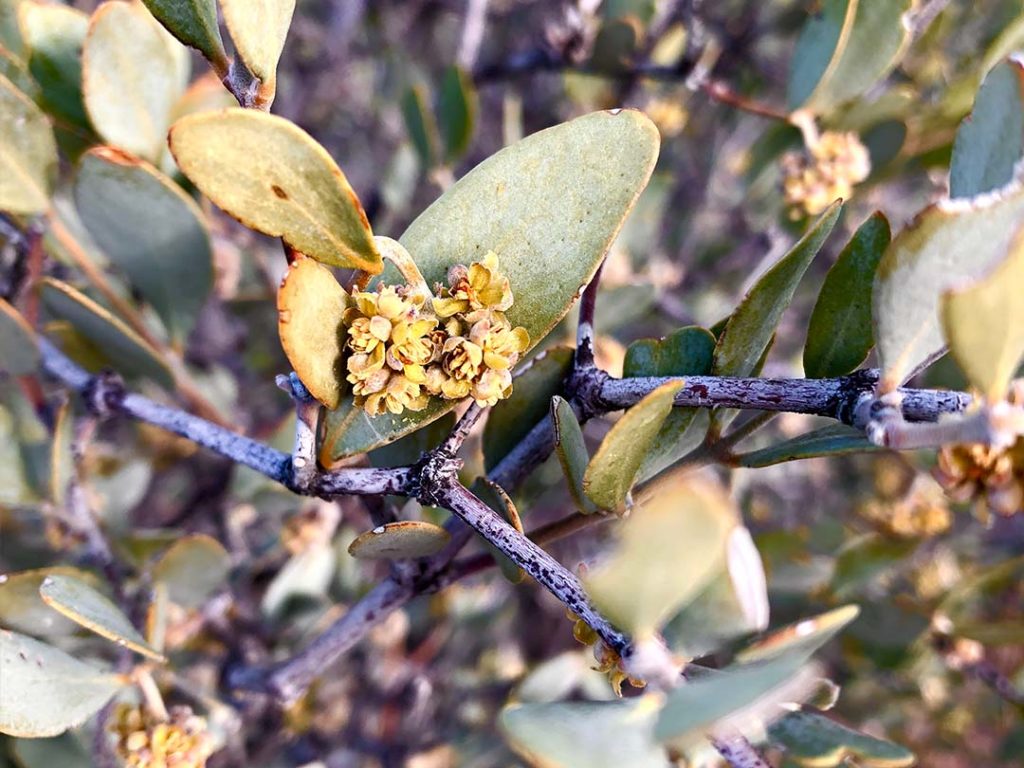Candelilla (Euphorbia antisyphilitica)
Join the january EcoQuest: hello jojoba
Native to the Sonoran Desert, jojoba (pronounced ho-HO-buh) plants are a common sight in desert shrub and lower chaparral habitats. It can be found in southwest Arizona into lower southeast California, Baja California and Sonora, Mexico. It is a drought and fire-resistant evergreen shrub that can stay low to the ground or reach heights of 10 feet, depending on where it grows. Jojoba has thick, leathery leaves and is dioecious, meaning it has male and female flowers on separate plants. Female plants produce a fruit with one seed that looks somewhat like an acorn, known as a nut. Jojoba’s life span is more than 100 years, and some live more than 200 years!
Common names for jojoba include deer-nut, coffee bush and quinine plant. Mule deer, jackrabbits, domestic sheep, goats and cattle all eat jojoba, and it is one of the four most important forage species for bighorn sheep. The nut is also eaten by birds, rodents, deer and javelinas. It is also edible in small quantities for humans. The plant was named jojoba by the O’odham, who use the nut to make a paste to treat burns. The Cahuilla roast and grind the nut to make a beverage similar to coffee.
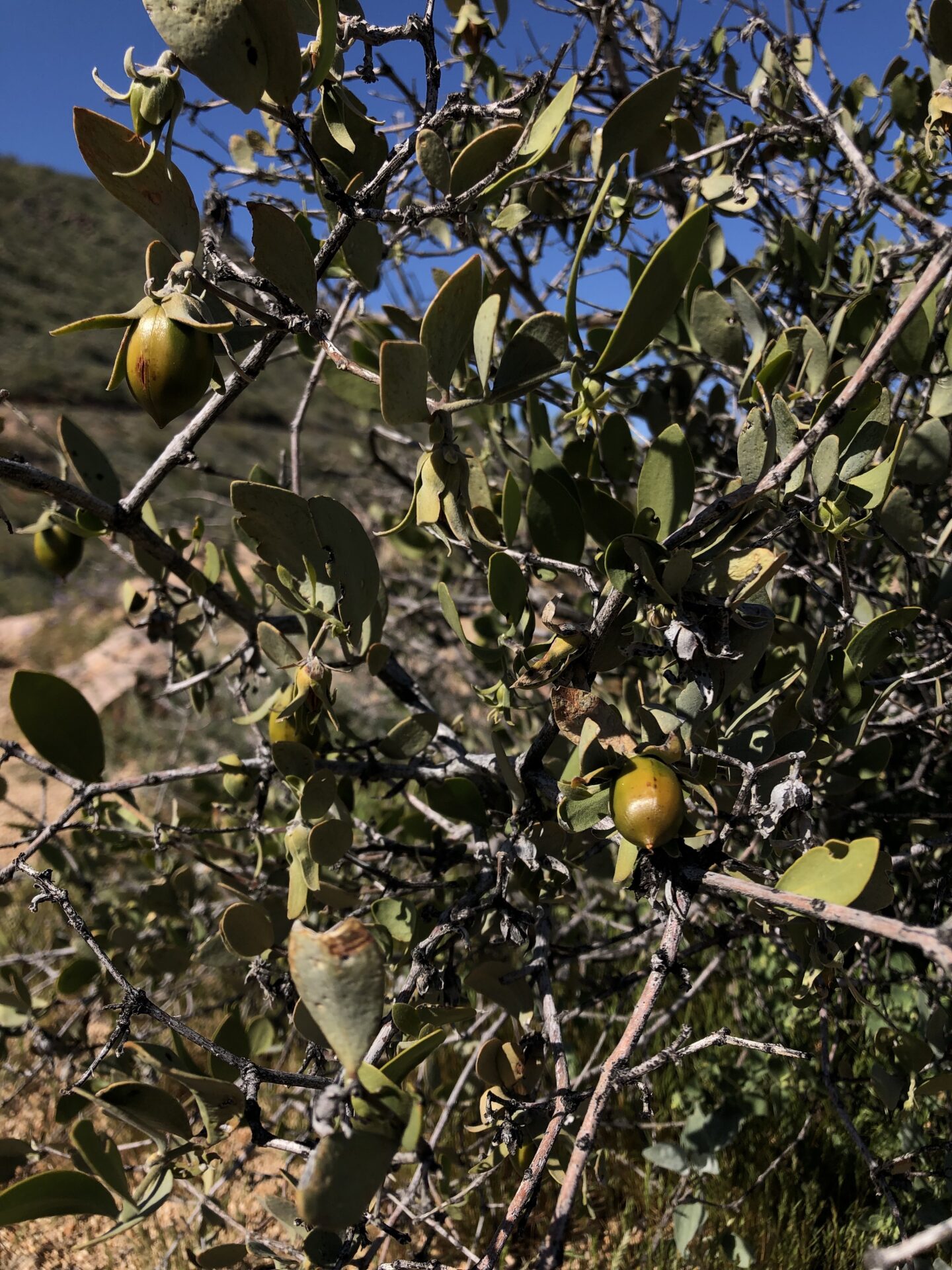
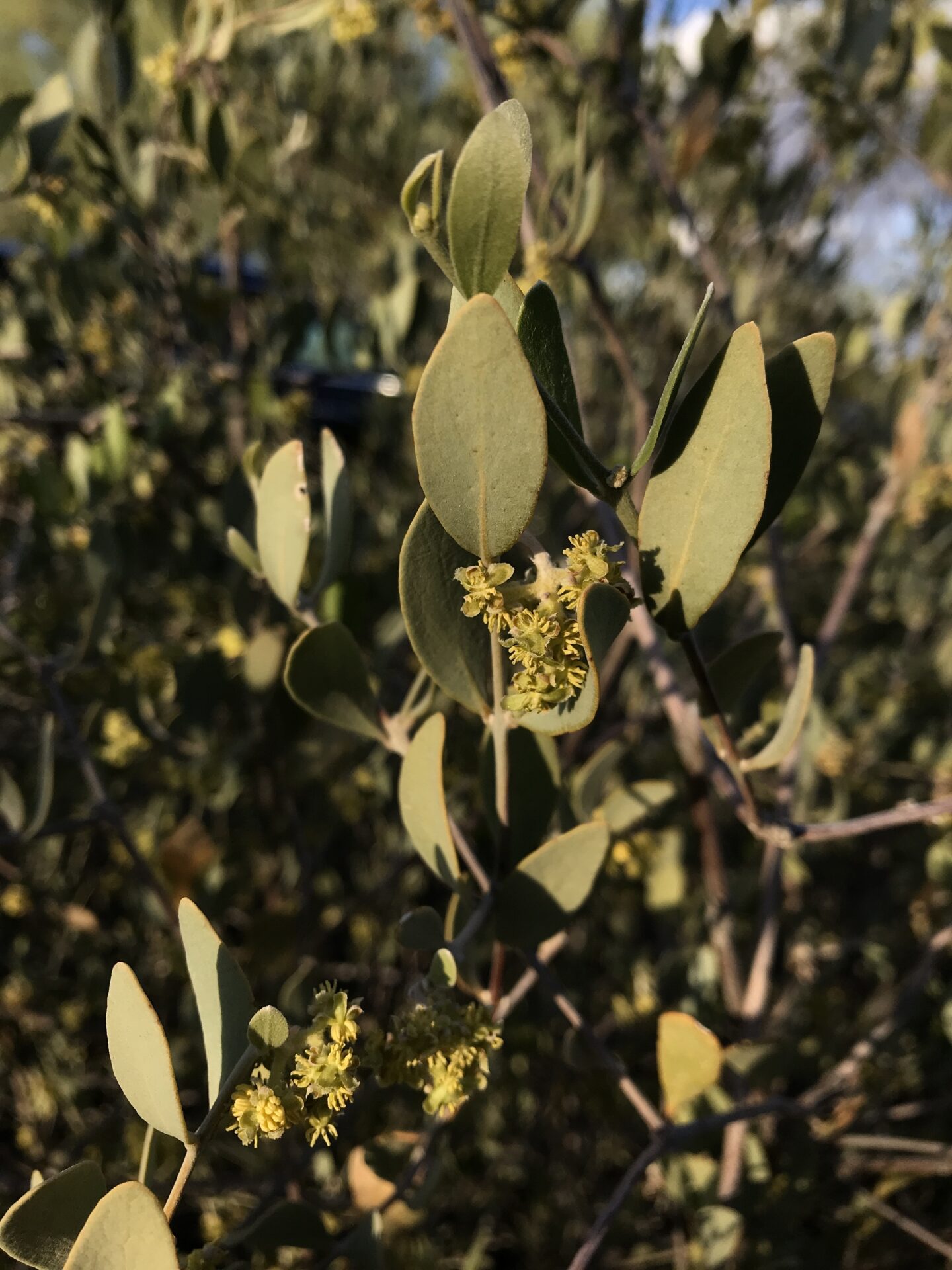
Female flowers and green unripe fruit on the left, male flowers on the right.
Does jojoba oil sound familiar? Jojoba nuts contain more than 40% oil, which is chemically similar to sperm whale oil. When sperm whales were listed as endangered in 1970, sperm whale oil importation was banned, and the race was on to find a substitute. The “Save the Whales” campaign put pressure on the U.S military and industries to find a substitute for sperm whale oil.
In 1971, Native American communities in Arizona and California collaborated with researchers from federal agencies and soon realized that jojoba oil was a near-perfect substitute. What followed was a jojoba farm boom, with nearly 40,000 acres in cultivation at one point. What the farmers did not realize is that jojoba plants are not easy to grow or care for, and their yield can be very unpredictable. The acres of jojoba farms declined, and eventually a synthetic oil was created.
Now, jojoba oil is largely used in the cosmetics industry, about 90% of what is produced. Yes, the jojoba nut you might see while hiking is the same one used to make jojoba oil in cosmetic products! It was also once thought the oil could be a cooking oil replacement, but it was discovered that it can only be consumed in small amounts, as it has a laxative or purgative effect if too much is ingested.
Jojoba can be seen in natural and landscaped areas around the Valley. See if you can spot it on your next hike, or while you’re out and about around town. Hint: you can see some interesting jojoba planted at the Phoenix Art Museum!
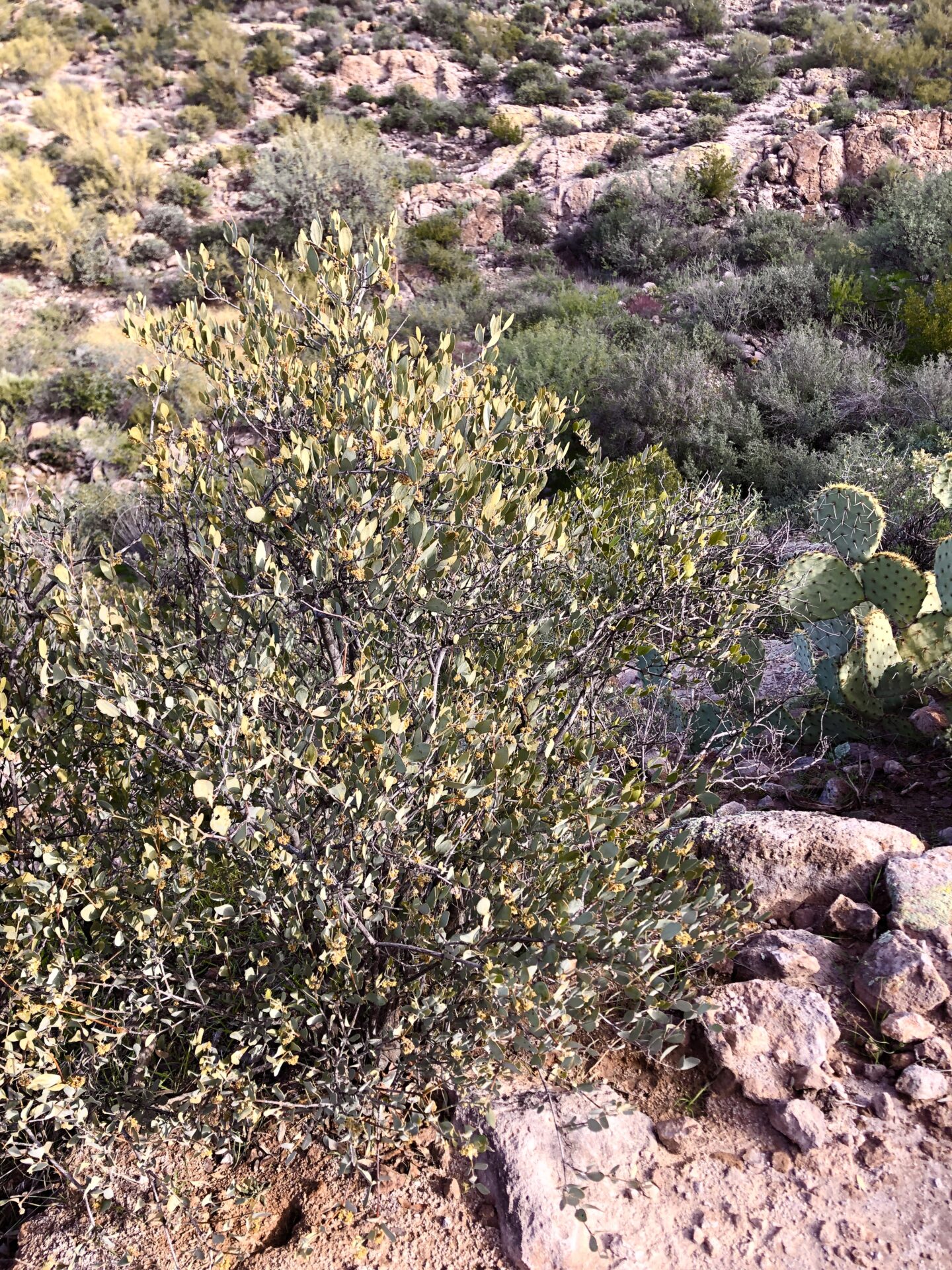
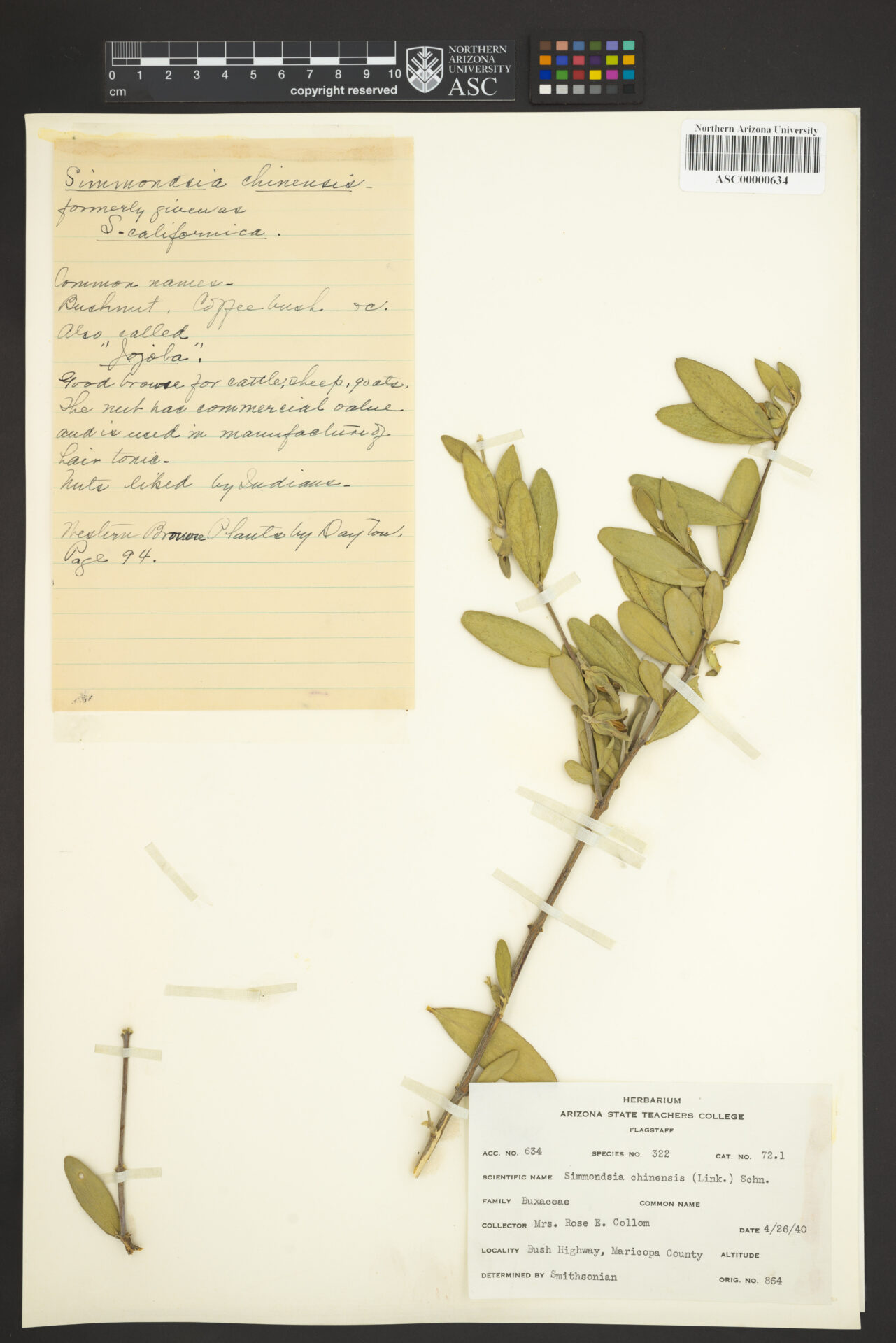
WHAT TO OBSERVE: Common Names: Jojoba, deer-nut, coffee bush, quinine plant
Scientific Name: (Simmondsia chinensis)
Name in O’odham: Hohowi
Nombre en español: Jojoba
SOURCES AND MORE INFORMATION:
University of Washington Magazine
Food Plants of the Sonoran Desert by Wendy C. Hodgson

EcoQuests are month-long challenges that are part of the larger Metro Phoenix EcoFlora project. Learn more by visiting our website.
Look for project happenings, EcoQuest announcements and more in the newsletter, project journal and on social media.

Please do not observe indoor houseplants or pets.
For your own safety and the protection of plants and wildlife, do not trespass when making observations. Please follow all posted rules and guidelines in parks/preserves and do not enter private property.
Do not remove or move natural materials (plants, animals, rocks).
Respect wildlife (do not touch, feed, or disturb animals and keep a safe distance).
Observe COVID-19 Guidelines/Recommendations.
This is a great opportunity to observe and appreciate nature in our neighborhoods as we all navigate the complications of COVID-19. It is imperative that you follow COVID-19 guidelines/recommendations (wear a mask, practice physical distancing and wash your hands).
Do what’s best for you and your community.
For more COVID-19 information and guidelines, visit:
https://www.inaturalist.org/projects/city-nature-challenge-2020/journal/31768-cnc-covid-19
https://www.inaturalist.org/blog/31664-exploring-nature-when-you-re-stuck-at-home
Arizona Office of Tourism: Responsible Recreation in AZ
https://tourism.az.gov/responsible-recreation-across-arizona
